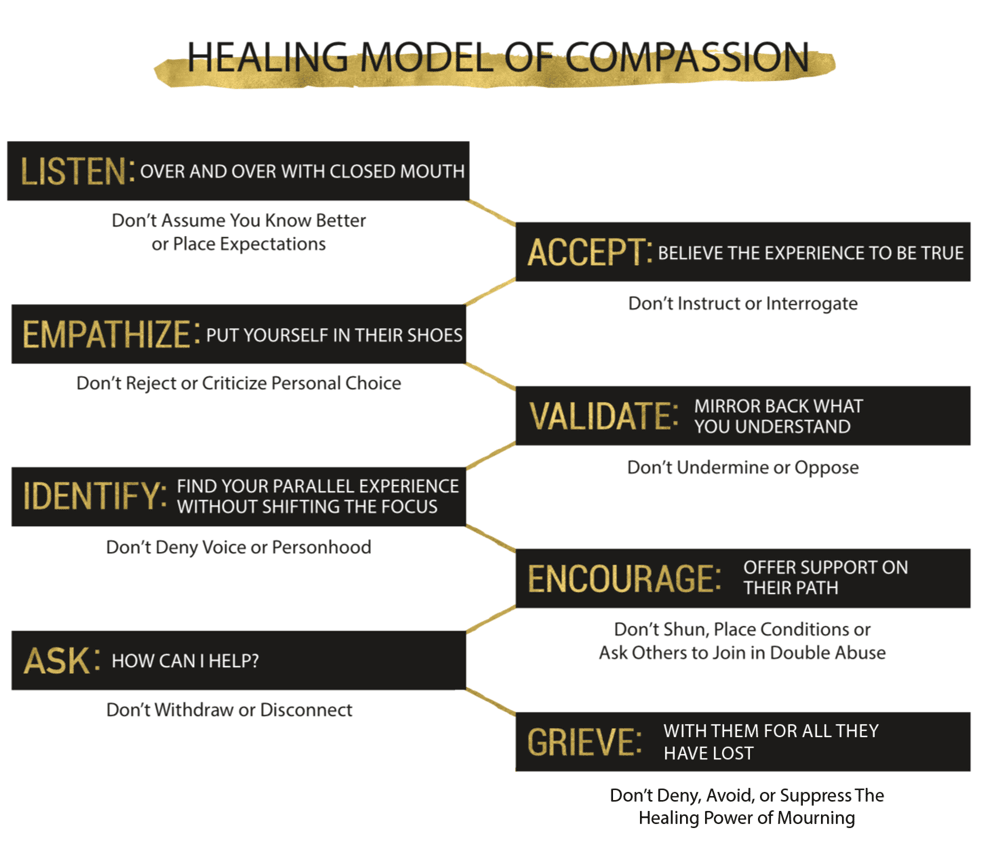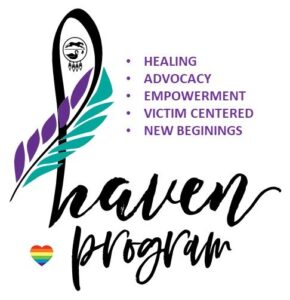
Accepting means you believe what the victim/survivor says is true of their experience. This does not mean approval or blind acceptance of what they may or may not have done. It means that you accept that they are in a highly compromised position without knowing what to do, and they need you to accept their pain, fear, indecision, and confusion for what it is: the story of their suffering.
Empathizing is the act of putting yourself in the other’s shoes so you can feel what they feel. Empathizing in current time with the victim’s situation will help you to communicate a deeper understanding without negatively judging or evaluating them. It will also help you provide compassion and patience as they process to make a decision. Your empathy will provide them with emotional companionship along their journey to healing.
Validating consists of mirroring back to your loved ones what you are understanding about what they are saying, not in a parroting way, but so they hear you truly comprehend their what they have experienced beyond just the content of their words. You can help them in identifying. Identifying is the act of helping the abused name what they experienced. This interaction gives them a voice and words to finally explain what has previously been so confusing. It is a necessary step to their healing.
Identifying is the act of helping the abused person put to words what they have experienced. This process helps them clearly identify what has previously been so confusing. Identifying the abuse supports them in speaking their truth to those who can intervene and help them heal. Sometimes, it can also be illuminating for you to share with them your own parallel experiences as examples, remembering the primary focus remains on developing their own narrative and truth.
Encouraging is you communicating to the victim that you believe in them and will walk beside them. It is pouring words of affirmation and validation into them. It is reminding them that with the right support they will have the courage to work through this complicated and confusing situation.
Grieve with them for all they have lost. Don’t deny, avoid, or suppress the healing power of mourning. Grieving with someone is a shared experience of deep connection. Place yourself in the victim’s shoes. They are feeling immense pain as well as loss of connection from others. Victims have often been forced into isolation by their abuser, or they have pulled away on their own accord due to their unstable circumstances. Deeply connecting with a victim in your care by allowing them to grieve or even better, grieving with them, can have a profound and positive effect affirming that they are valued and loved.
It’s important to note that the victim is in a mindset of anticipatory fear as they share their story. They are monitoring your facial expressions and body language as they desperately seek to be accepted by a kind-hearted and supportive First Responder. They may be just coming to terms with the realization that they have been or are being emotionally, physically or sexually abused and their world is turning upside down. When you demonstrate a deep connection with those who are suffering it can have a powerful impact on their steps towards healing.
When someone you love is in an abusive relationship it is often difficult to know what to say or do. I hope you will find this “ Healing Model of Compassion” from The Mend Project helpful.
For more information visit themendproject.com





